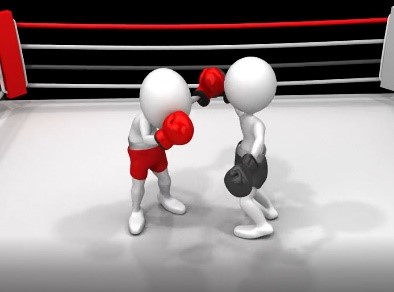 After reading the latest Q & A from Chicago Manual,1 our friend Bonnie posed her own question that gets to the heart of Evidence Style and why it follows certain practices:
After reading the latest Q & A from Chicago Manual,1 our friend Bonnie posed her own question that gets to the heart of Evidence Style and why it follows certain practices:
Bonnie's Q:
“I noticed in the second question the writer stated Wikipedia should be written in roman because it was never in print. I thought all website names were supposed to be italicized because they were likened to books, and the webpages were like chapters in that book.”
EE's A:
Different style guides use different practices. On every point that Evidence Explained differs from Chicago Manual of Style, that decision is based on (a) consistency; and (b) the need for one basic pattern that's easy for researchers to remember.
EE’s rationale is this.
- Whether material is published in print or on line, it's published.
- Material published online can follow the same pattern we learned for material published in print.
EE sees no logical reason that researchers should have to learn one rule for printed material and another for online material. The most basic citation for history researchers is the book citation, so let’s examine that format as applied to print and online sources:
BOOK:
Name of Author, Title of Book (Place of publication: Date of publication), specific page, etc.
WEBSITE:
Name of Website Creator, Title of Website (Place of publication=URL : Date of posting or access), specific paragraph, etc.
For a chapter within a book that has individual chapter authors and a general editor, we add two fields at the start of the citation. We do the same, if we're citing a website that has individual authors or databases:
BOOK CHAPTER:
Name of Chapter Author, "Title of Chapter," Name of Editor, Title of Book (Place of publication: Date of publication), specific page, etc.
ARTICLE OR DATABASE AT WEBSITE:
Name of Article-Database Creator [if different from website creator], "Title of Article or Database," Name of Website Creator, Title of Website (Place of publication=URL : Date of posting or access), specific paragraph, etc.
Your opinion, please. Should printed materials and online materials be a matched pair or sparring partners?
All rules, of course, have exceptions. They must have exceptions because research materials have endless variations. Four exceptions apply to the issues at hand:
1.
When a database or article is created by the same entity as the website, the creator’s name need not be repeated at both places. We need cite it only for the website itself.
2.
When a website is autonomously named (the title of the site is exactly that of the entity that created it) we need not repeat the name in both places. Our Image Credit note, below, illustrates the point. It would be redundant to cite both the company PresenterMedia and the website PresenterMedia.
3.
When citing publication details (the details that appear in parentheses), two options are common:
- (Place of publication: Publisher, Date)
- (Place of publication: Date)
The first option is the most complete, obviously. Many publisher use the second option to save space. In doing so, they argue that if we know the place and date of publication, we can use common online search tools to identify the publisher.
EE recommends the more-complete option for printed works. With online publications, however, the publisher is almost always the creator of the website, and the name is usually encoded in the URL. Repeating the identity of the publisher, after the URL, would be redundant.
4.
When citing publication data for a printed book, by traditional practice the colon immediately follows the publication place, with no space between. Library cataloging, however, adds a space between the two. Evidence Style also uses that space after the URL so that the colon is not mistakenly read as part of the URL and will not be automatically included when our app creates hotlinks.
The most common excuse that researchers make for not including citations is It's too complicated! EE's goal is to un-complicate the process as much as possible. Published materials, regardless of type, can be cited with one basic pattern. If we understand that basic pattern, and the logic behind modifications, we are well equipped to handle any more-complicated source that comes our way.
1. "New Questions & Answers," The Chicago Manual of Style Online (https://www.chicagomanualofstyle.org/qanda/latest.html: accessed 2 October 2018).
IMAGE CREDITS: PresenterMedia (https://www.presentermedia.com/index.php?target=closeup&id=6788&categoryid=&maincat=video : downloaded 3 October 2018), item 6788, “Knock Out Competition”; screen shot from video, used under license.
HOW TO CITE: Elizabeth Shown Mills, "Citing Website Titles," blog post, QuickTips: The Blog @ Evidence Explained (https://www.evidenceexplained.org/quicktipsciting-website-titles: posted 3 October 2018).
Incorrect weblink in referenced material.
Just an observation...
The underlying web-link for the reference note, "HOW TO CITE...," is currently https://www.evidenceexplained.org/quicktips/nihil-debet
Instead of .org, It should be .com.
i.e. https://www.evidenceexplained.com/quicktips/nihil-debet